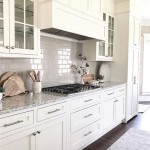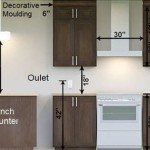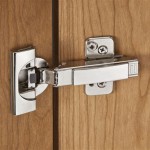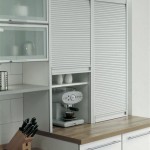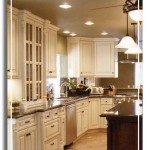Rustic Cedar Kitchen Cabinets: A Natural Aesthetic for the Heart of the Home
Rustic cedar kitchen cabinets offer a compelling blend of natural beauty and robust functionality. Characterized by their distinctive grain patterns, warm hues, and inherent durability, cedar cabinets can transform a kitchen into a welcoming and visually appealing space. This article explores the characteristics, benefits, design considerations, and maintenance aspects of incorporating rustic cedar cabinets into kitchen design.
The term "rustic" in the context of kitchen cabinetry generally refers to a design aesthetic that emphasizes natural materials, textures, and imperfections. This style aims to evoke a sense of warmth, history, and connection to the outdoors. Cedar, with its inherent variations in color and grain, lends itself perfectly to this aesthetic. The presence of knots, mineral streaks, and other natural markings contributes to the unique character of each cabinet, ensuring that no two kitchens are exactly alike. The choice of cedar as a material for kitchen cabinets signifies a commitment to a design that prioritizes natural elements and embraces the individuality of the wood.
Understanding Cedar Wood Properties
Cedar is not a single species of tree, but rather a genus encompassing several varieties, each with slightly different characteristics. Western Red Cedar, Eastern Red Cedar, and Aromatic Cedar are among the most commonly used types for woodworking, including cabinet construction. Each variety offers its own unique blend of color, aroma, and durability. Western Red Cedar, for instance, is known for its rich reddish-brown tones and exceptional resistance to decay and insects. Eastern Red Cedar, on the other hand, boasts a more variegated color palette and a distinctive aromatic scent.
One of the key advantages of cedar is its natural resistance to moisture, decay, and insects. This inherent property makes it a particularly suitable choice for kitchen environments, where humidity and potential spills are common occurrences. Unlike some other wood species, cedar does not require extensive chemical treatment to protect it from these elements, making it a more environmentally friendly option. The natural oils present in cedar act as a preservative, inhibiting the growth of mold and mildew and deterring pests.
Furthermore, cedar is a relatively stable wood, meaning it is less prone to warping or cracking due to changes in temperature and humidity. This stability is crucial for kitchen cabinets, as they are often subjected to varying environmental conditions. The dimensional stability of cedar ensures that cabinets maintain their structural integrity and aesthetic appeal over time. However, it's important to note that proper sealing and finishing are still essential to protect the wood from excessive moisture and maintain its beauty.
Design Considerations for Rustic Cedar Kitchen Cabinets
Integrating rustic cedar cabinets into a kitchen design requires careful consideration of various factors, including the overall style of the home, the desired functionality of the kitchen, and the specific characteristics of the cedar wood being used. The natural warmth and character of cedar can complement a wide range of design styles, from traditional farmhouse to contemporary rustic.
When selecting cedar cabinets, it is important to consider the grain patterns and color variations of the wood. These natural features contribute significantly to the overall aesthetic of the kitchen. Some homeowners prefer consistent grain patterns for a more uniform look, while others embrace the irregularities and variations that make each cabinet unique. The presence of knots, mineral streaks, and other natural markings can enhance the rustic charm of the cabinets.
The choice of hardware can also play a significant role in complementing the rustic aesthetic of cedar cabinets. Black iron or bronze hardware, for instance, can create a striking contrast with the warm tones of the wood. Simple, understated designs tend to work best, allowing the natural beauty of the cedar to take center stage. Consider incorporating elements such as hammered metal or distressed finishes to further enhance the rustic appeal.
In terms of layout and functionality, rustic cedar cabinets can be adapted to suit a variety of kitchen configurations. Open shelving, integrated appliances, and custom storage solutions can all be incorporated into the design to create a kitchen that is both beautiful and practical. Consider using cedar for accent pieces, such as range hoods or island trim, to tie the design together. The natural aroma of cedar can also contribute to a pleasant and inviting kitchen environment.
The combination of cedar cabinets with other natural materials, such as stone countertops, exposed brick, and hardwood flooring, can create a cohesive and harmonious design. The use of natural light is also crucial for showcasing the beauty of the wood. Large windows and skylights can help to illuminate the grain patterns and color variations of the cedar, enhancing its natural warmth and character. Incorporating natural textures, such as linen or cotton, can further enhance the rustic feel of the kitchen.
While cedar is naturally resistant to moisture, it's still important to consider the placement of cabinets in relation to water sources. Avoid placing cedar cabinets directly adjacent to sinks or dishwashers without proper protection. Consider using a water-resistant sealant or finish to protect the wood from splashes and spills. Regular cleaning and maintenance can help to prevent water damage and extend the lifespan of the cabinets.
Maintaining and Caring for Rustic Cedar Kitchen Cabinets
Proper maintenance is crucial for preserving the beauty and longevity of rustic cedar kitchen cabinets. While cedar is a durable wood, it is still susceptible to damage from scratches, dents, and prolonged exposure to moisture. Regular cleaning and sealing can help to protect the wood and maintain its natural luster.
For general cleaning, a mild soap and water solution is typically sufficient. Avoid using harsh chemicals or abrasive cleaners, as these can damage the finish and strip the wood of its natural oils. Use a soft cloth or sponge to gently wipe down the cabinets, and be sure to dry them thoroughly afterward. Avoid allowing water to sit on the surface of the wood, as this can lead to stains or water damage.
Periodic sealing is recommended to protect the wood from moisture and stains. The frequency of sealing will depend on the specific type of finish used and the level of exposure to moisture. A high-quality sealant will help to create a barrier against water and other liquids, preventing them from penetrating the wood. Follow the manufacturer's instructions for application and drying times. Consider using a sealant that is specifically designed for cedar wood to ensure optimal protection.
Scratches and dents can be repaired using wood filler or cedar patching compounds. Apply the filler to the damaged area, allow it to dry completely, and then sand it smooth. Stain or paint the repaired area to match the surrounding wood. For deeper scratches or dents, it may be necessary to consult with a professional woodworker.
Avoid placing hot pots or pans directly on cedar countertops, as this can cause heat damage. Use trivets or hot pads to protect the wood from direct heat. Be careful when handling sharp objects near the cabinets, as they can easily scratch or dent the surface. Regular dusting can help to prevent the buildup of dust and debris, which can dull the finish over time.
The natural aroma of cedar can diminish over time. To refresh the scent, consider lightly sanding the surface of the wood and applying a cedar oil or cedarwood essential oil. This will help to release the natural oils in the wood and restore its characteristic fragrance. Be sure to test the oil on a small, inconspicuous area first to ensure that it does not discolor the wood.
Monitor humidity levels in the kitchen. Excessive humidity can lead to warping or cracking of the wood. Use a dehumidifier if necessary to maintain a stable humidity level. Protect cabinets from direct sunlight. UV rays can fade the color of the wood over time. Consider using window treatments to filter sunlight and protect the cabinets from excessive exposure.
By following these maintenance tips, homeowners can ensure that their rustic cedar kitchen cabinets remain beautiful and functional for years to come. The natural beauty and durability of cedar make it a worthwhile investment for any kitchen renovation.

Cedar Covered Rustic Kitchen With Modern Day Convenience Jackson Design And Remodeling

Custom Rustic Cedar Kitchen Cabinets For Vienna Woodworks

Cedar Covered Rustic Kitchen With Modern Day Convenience Jackson Design And Remodeling

Red Cedar Kitchen Cabinets Ez Mountain Rustic Furniture

Custom Rustic Cedar Kitchen Cabinets For Vienna Woodworks

Rustic Red Cedar Kitchen Cabinets Modern Frontier Log Furniture On Fb Decor Apartment

Custom Rustic Cedar Kitchen Cabinets For Vienna Woodworks

Hand Crafted Custom Rustic Cedar Kitchen Cabinets Live Edge By King Of The Forest Furniture Custommade Com

Cedar Covered Rustic Kitchen With Modern Day Convenience Jackson Design And Remodeling

Custom Cedar Kitchen Cabinets Building
Related Posts


